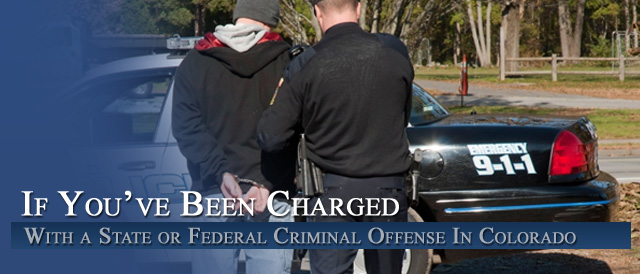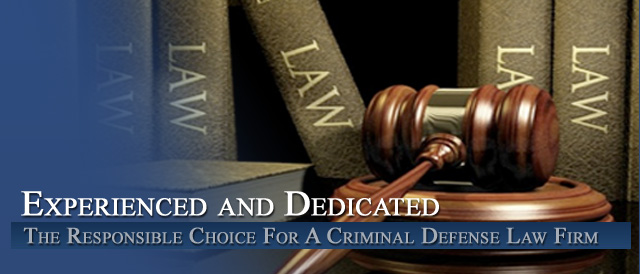




Colorado Use Of Force In Arrest Issues – The Illegal Police Use Of A Taser – Stun Gun
By Colorado Criminal Defense Lawyer – Attorney – H. Michael Steinberg
Colorado Use Of Force In Arrest Issues – The Illegal Police Use Of A Taser – Stun Gun – This topic comes up very often in my cases where an arrest has involved the use of a taser – stun gun and the person arrested is outraged that that were “tased” when they had not resisted arrest.
In Colorado the use of a stun gun by private citizens is governed by CRS § 18-12-101
This law defines a stun gub as “a device capable of temporarily immobilizing a person by the infliction of an electrical charge.”
Another law creates a crime – CRS § 18-12-106.5. Use of stun guns.. Which provides that “A person commits a class 5 felony if he knowingly and unlawfully uses a stun gun in the commission of a criminal offense.”
In addition – certain of Colorado’s cities and municipalities may have regulations regarding stun guns.. And other “Conducted Electrical Weapons” these include Boulder, Burlington, Larimer County, Lafayette, Milliken, Parker, Minturn, Pueblo, Eagle and Thornton.
The Watershed Case of Draper v. Reynolds Sets The Standard For The Police Use of Taser – Stun Guns
Decided in 2004 – the case of Draper v. Reynolds held that – under the “totality of the circumstances”, in that case – the use of the Taser gun did not constitute excessive force, and therefore did not violate the defendant’s constitutional rights at the time of his arrest.
Few cases delve into when and under what circumstances the police are authorized to use a stun gun – taser.
Every Case of Excessive Force Will Turn – As the Draper Case Does – On The Facts Of The Case
Draper was driving his tractor-trailer on a major highway when he was stopped by a police officer for a license plate violation. He was – to put it mildly – a jerk to the police officer. Fiorst he sat in his truck with the window rolled up and refused the officer’s commands to exit.
Next he yelled at the officer for shining a flashlight in his face.
Next -after emerging from the truck he ignored the officer’s 5 requests to produce his bill of lading, proof of insurance, and log book. Instead he berated the officer with a large number angry and nasty statements such as “How ‘bout you just go ahead and take me to f***ing jail, then man, you know, because I’m not going to kiss your damn ass because you’re a police officer.”
After that barrage of verbal attacks and as the words continued – the officer tased him one time taking him down.
No warning was given prior to the use of the Taser and the arrest of Draper.
Colorado Use Of Force Laws And The Use Of A Taser
Here is a reprint of Colorado’s Use of Force Laws In Making Arrests
§ 18-1-707. Use of physical force in making an arrest or in preventing an escape
(1) Except as provided in subsection (2) of this section, a peace officer is justified in using reasonable and appropriate physical force upon another person when and to the extent that he reasonably believes it necessary:
(a) To effect an arrest or to prevent the escape from custody of an arrested person unless he knows that the arrest is unauthorized; or
(b) To defend himself or a third person from what he reasonably believes to be the use or imminent use of physical force while effecting or attempting to effect such an arrest or while preventing or attempting to prevent such an escape.
(2) A peace officer is justified in using deadly physical force upon another person for a purpose specified in subsection (1) of this section only when he reasonably believes that it is necessary:
(a) To defend himself or a third person from what he reasonably believes to be the use or imminent use of deadly physical force; or
(b) To effect an arrest, or to prevent the escape from custody, of a person whom he reasonably believes:
(I) Has committed or attempted to commit a felony involving the use or threatened use of a deadly weapon; or
(II) Is attempting to escape by the use of a deadly weapon; or
(III) Otherwise indicates, except through a motor vehicle violation, that he is likely to endanger human life or to inflict serious bodily injury to another unless apprehended without delay.
(3) Nothing in subsection (2) (b) of this section shall be deemed to constitute justification for reckless or criminally negligent conduct by a peace officer amounting to an offense against or with respect to innocent persons whom he is not seeking to arrest or retain in custody
…
(4) For purposes of this section, a reasonable belief that a person has committed an offense means a reasonable belief in facts or circumstances which if true would in law constitute an offense. If the believed facts or circumstances would not in law constitute an offense, an erroneous though not unreasonable belief that the law is otherwise does not render justifiable the use of force to make an arrest or to prevent an escape from custody. A peace officer who is effecting an arrest pursuant to a warrant is justified in using the physical force prescribed in subsections (1) and (2) of this section unless the warrant is invalid and is known by the officer to be invalid.
….
(7) A private person acting on his own account is justified in using reasonable and appropriate physical force upon another person when and to the extent that he reasonably believes it necessary to effect an arrest, or to prevent the escape from custody of an arrested person who has committed an offense in his presence; but he is justified in using deadly physical force for the purpose only when he reasonably believes it necessary to defend himself or a third person from what he reasonably believes to be the use or imminent use of deadly physical force.
Colorado Use Of Force In Arrest Issues – The Illegal Police Use Of A Taser – Stun Gun – What Was The Issue In Draper?
…Was the use of the Taser gun considered excessive force by constitutional standards in the Draper Case ? What legal standards apply in all Taser Use Cases?
The Draper Court sets out some important standards for the use of a Taser:
“It is well settled that the right to make an arrest necessarily carries with it the right to use some degree of physical coercion or threat thereof to effect it.
[T]he calculus of reasonableness must embody allowance for the fact that police officers are often forced to make split-second judgments-in circumstances that are tense, uncertain, and rapidly evolving-about the amount of force that is necessary in a particular situation.”
The use of the taser in Draper to “effectuate” his arrest of Draper was “ reasonably proportionate to the difficult, tense and uncertain situation that Reynolds faced in this traffic stop, and did not constitute excessive force.”
H. Michael’s Take On The Draper Case And Avoiding Being Tased During A Police Investigation
Be polite – there is justice and then there is “street justice.” If you insist on being a jerk to the guy with the gun and the Taser – be advised – you may be legally tased. My recommendation – be polite and be cooperative without sacrificing your constitutional rights – also turn on your cell phone to record – at least to audio – and record your attempts to be polite before you are tased..
If you are hostile, belligerent, and uncooperative, if you refuse reasonable requests by the police to see documents they are entitled to, if you harass and try to intimidate the officer doing his job, if you use profanity, constantly move around and pace in agitation, and repeatedly yell at the officer – then get ready to be tased or worse.
Colorado Law Does Not Require The Police To Issue A Verbal Warning Before You Are Tased
The police actually believe that ” a verbal arrest command” is not required under circumstances such as in the Draper case. A verbal arrest command accompanied by attempted physical handcuffing, – in their opinion may actually escalate a tense and difficult situation into a serious physical struggle. Therefore – they believe and the law supports – no warning is necessary and can possibly be counterproductive which may further “jeopardize” not only the safety of the officer but the safety of the person being arrested.
Another Case Helps Add Light To This Issue – Graham v. Connor
Courts look at three factors in determining if a particular use of force is objectively reasonable.
(1) First – how serious was the offense that the officer suspected at the time the officer was in contact with the individual?
(2) Second, did the suspect pose an active threat to the officer or others?
(3) Third, was the suspect actively resisting or attempting to evade arrest by flight?
The Company That Produces The Taser Has Published The Following Training Issues Concerning the Use Of The Taser
These Guidelines Are Helpful and Instructive:
-
Electronic Control Device Force Continuum/Policy-Training Issues:
-
Electronic Control Device must be worn weak-side.
-
Electronic Control Device deployment should not be considered for the passively resistant subject-active resistance/active aggression should be required.
-
Officers must be trained concerning ability of electrical charge to act as an ignition for combustible materials. (Note: Officers have been seriously injured and or killed after deploying a Electronic Control Device in the presence of open natural gas during suicidal person call)
-
Multiple Electronic Control Device deployments against an individual increases the likelihood of serious injury where the individual is suffering from other symptoms such as cocaine intoxication. Policy and training should encourage officers to minimize the successive number of discharges against an individual where possible.
-
Agencies should recognize however, particularly where back-up officers are unavailable where multiple applications may be necessary.
-
A contributing factor to serious injury or death is the level of a subject’s exhaustion. Studies recommend that when an officer believes that control of a subject will be necessary and met with resistance, deployment of the Electronic Control Device should be considered early on in the event so that the person has not reached a level of exhaustion prior to the Electronic Control Device’s use.
-
In cases where subject is actively resisting an officer’s attempt to take them into custody but not threatening the officer with an assault-it is recommended that the Electronic Control Device be used in the “push stun mode.”
-
Officers should avoid firing toward eyes/head/genitals
-
The preferred targeting is the center mass of the subject’s back., however it is recognized that it is not always possible to get behind the subject.
-
Where back-targeting is not possible-the secondary area is chest and legs-Officers should be discouraged from chest targeting when dealing with a female subject.
-
Officers should be prohibited from using the device as punitive measure.
-
A warning prior to discharge is not always necessary for this type of force to be considered reasonable, model policies as well as courts have noted that giving a subject a warning may enhance the danger to the officer and the subject by giving the subject time to avoid the deployment
-
The device should never be used on a handcuffed person to force compliance unless the subject poses a violent threat to the officer through physical conduct and cannot otherwise be controlled.
-
Electronic Control devices are best placed along with pepper-spray in a use of force continuum.
-
Officers should consider the location and environment of the subject. i.e. Is the subject at the top of a stairwell such that when incapacitated by the Electronic Control Device-they fall down the stairs causing a collateral injury.
-
Officers should be aware that a subject’s heavy clothing may impact the effectiveness of the electronic control device.
-
Officers should consider whether the subject has been exposed to combustible elements that may be on their person such as gasoline. The use of a Electronic Control Device on such persons may cause an ignition and fire.
-
Officers should consider the particular subject and any vulnerabilities they may have such as: a person who is small in stature will be more dramatically impacted; some agencies have been criticized as well as sued for use on pregnant women and the elderly.
-
Alternative tactics should be utilized where the officer has prior information that the subject suffers from a disability which would increase the danger to that person by using the Electronic Restraint Device. i.e. A person at the scene tells an officer that the subject has a heart condition.
-
Agency policy/training must address removal of darts from a person who is brought under control by deployment. Where there is any difficult, removal should be conducted by medically trained personnel.
-
All persons who have been the subject of a Electronic Control Device deployment should be cleared medically or at the very least monitored for a period of time with a focus on symptoms of physical distress. It should be noted that studies indicate that persons who suffer from excited delirium may not be immediately impacted and the onset of difficulty may occur a period of time after the police control event.
Finally – The Proper Use Of The Stun Gun Is Usually Compared To The Deployment Of Pepper or OC Spray
These devices are prohibited from being used:
a. In a punitive or coercive manner.
b. On a handcuffed/secured prisoner, absent overtly assaultive behavior that cannot be reasonably dealt with in any other less intrusive fashion.
c. On any suspect who does not demonstrate their overt intention (1) to use violence or force against the officer or another person or (2) to flee in order to resist/avoid detention or arrest (in cases where officers would pursue on foot).
d. In any environment where an officer knows that a potentially flammable, volatile, or explosive material is present (including but not limited to OC spray with volatile propellant, gasoline, natural gas, or propane).
Colorado Use Of Force In Arrest Issues – The Illegal Police Use Of A Taser – Stun Gun
Denver Colorado False Reporting Criminal Defense Lawyer
ABOUT THE AUTHOR: H. Michael Steinberg – Email The Author: [email protected]
If you ahave questions about Colorado Use Of Force In Arrest Issues – The Illegal Police Use Of A Taser – Stun Gun, please call our office. The Law Offices of H. Michael Steinberg, in Denver, Colorado, provide criminal defense clients with effective, efficient, intelligent and strong legal advocacy. We can educate you and help you navigate the stressful and complex legal process related to your criminal defense issue.
H. Michael Steinberg, is a Denver, Colorado criminal defense lawyer with over 40 years of day to day courtroom experience – specializing only in Colorado Criminal Law along the Front Range. He will provide you with a free initial case consultation to evaluate your legal issues and to answer your questions with an honest assessment of your options. Remember, it costs NOTHING to discuss your case. So call now for an immediate free phone consultation.
Helping Clients To Make Informed Decisions In the Defense of Colorado Criminal Cases.
Colorado Defense Lawyer H. Michael Steinberg provides solid criminal defenses for clients throughout the Front Range of Colorado – including the City and County courts of Adams County, Arapahoe County, City and County of Boulder, City and County of Broomfield, City and County of Denver, Douglas County, El Paso County – Colorado Springs, Gilpin County, Jefferson County, Larimer County, and Weld County,…. and all the other cities and counties of Colorado along the I-25 Corridor… on cases involving .Colorado Use Of Force In Arrest Issues – The Illegal Police Use Of A Taser – Stun Gun.
Other Articles of Interest:
- Resisting Arrest In Colorado 18-3-201 – Don’t Resist – Whether You Think It Is A Lawful Arrest Or Not – Some Practical Advice
- 030. COLORADO CRIMINAL CODE – CRIMES INVOLVING FIREARMS AND WEAPONS
- Colorado Juvenile Criminal Law and Issues – Common Motions – Police Stops
- Colorado Criminal Law – Do I Have The Right To Use Self Defense Against The Police During An Arrest To Defend Against Charges Of Obstruction Of A Peace Officer and Resisting Arrest?
- Colorado Criminal Law – When Can The Police Arrest Me Without A Warrant?













